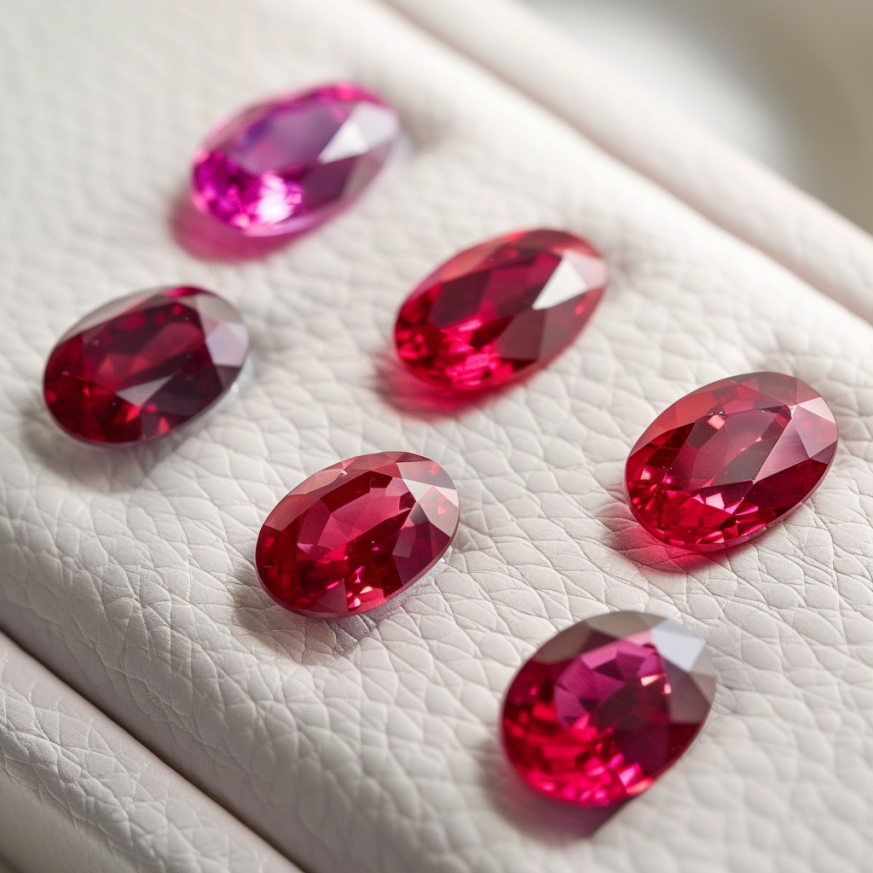Grading Ruby Color Clarity
When determining the quality of a ruby, grading ruby color clarity is essential in evaluating its overall beauty and value. The two most critical factors—color and clarity—greatly influence a ruby’s desirability in the gemstone market. While color is the primary driver of value, clarity also plays a significant role in determining a ruby’s brilliance and appeal.

1. Grading Ruby Color
A ruby’s color is assessed based on three key attributes: hue, tone, and saturation.
- Hue: The dominant color of the ruby, with pure red being the most desirable. Slight secondary hues, such as purplish or orangish tones, can affect the value.
- Tone: Refers to how light or dark the ruby appears. Medium to medium-dark tones are preferred, as overly dark rubies appear less vibrant, while overly light ones may resemble pink sapphires.
- Saturation: The intensity of the red color. Highly saturated rubies with little to no brown or gray hues are the most valuable. The rare “pigeon blood” red rubies from Myanmar exhibit the highest saturation and command premium prices.
2. Grading Ruby Clarity
Unlike diamonds, which are valued for their near-flawless clarity, rubies typically contain natural inclusions. The clarity grading system for rubies focuses on the visibility and impact of these inclusions.
- Eye-Clean Rubies: Rubies with no visible inclusions to the naked eye are rare and highly valued.
- Lightly Included Rubies: Minor inclusions that do not significantly impact transparency or brilliance.
- Heavily Included Rubies: Rubies with noticeable inclusions that may affect durability and overall beauty.
Certain inclusions, such as fine needle-like “silk” inclusions, can enhance the gem’s appearance by giving it a velvety texture. However, excessive inclusions that cause cloudiness or fractures reduce the stone’s value.
3. The Impact of Treatments on Grading
Heat treatment is commonly used to enhance a ruby’s color and clarity. While untreated rubies with high color and clarity are extremely rare and valuable, heat-treated rubies are more affordable and widely available. Other treatments, such as fracture filling, significantly impact a ruby’s clarity and should be disclosed when purchasing.
Conclusion
Grading ruby color clarity is crucial in assessing a ruby’s beauty and worth. A rich red hue with high saturation and minimal visible inclusions defines the finest rubies, making them some of the most sought-after gemstones in the world.
